Current status of Kimchi manufacturing process
| High concentrated salt water |
|
| Salt costs in pickling process |
|
| Matter of hygiene |
|
Principles of salt collection

Waste brine treatment Pilot

Pilot Test Results
| Keimyoung Univ. food/livestock/drink water TMR analysis | |||||||||
|---|---|---|---|---|---|---|---|---|---|
| Category | A coporation | B coporation | Drinking water Standards |
||||||
| Before treatment | After treatment | Before treatment | After treatment | ||||||
| Coliform | LB(-) | negative | LB(-) | negative | LB(-) | negative | LB(-) | negative | ND |
| General bacteria | 8,700,000CFU/mL | 10CFU/mL | 2,200,000CFU/mL | 15CFU/mL | 100CFU/mL | ||||
| Bacillus cereus | Atypical | negative | No colonization | negative | Atypical | negative | No colonization | negative | |
| Salmonella | No colonization | negative | No colonization | negative | No colonization | negative | No colonization | negative | |
| E.coli O157 | Atypical | negative | No colonization | negative | Atypical | negative | No colonization | negative | |
| vibrio parahae molyticus |
No colonization | negative | No colonization | negative | No colonization | negative | No colonization | negative | |
| staphylococcus aureus |
Atypical | negative | No colonization | negative | Atypical | negative | No colonization | negative | |
| Microbiological analysis result(A corporation) |
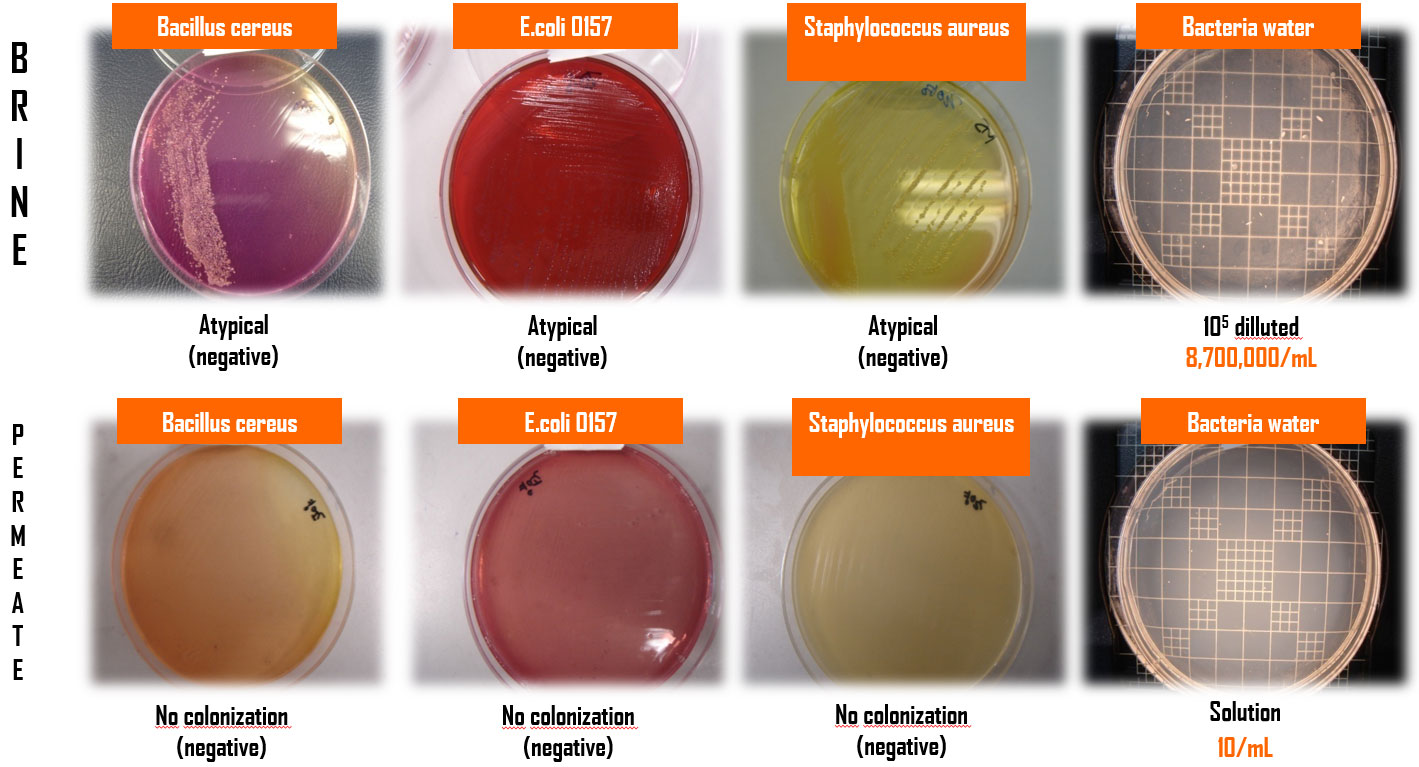 |
| Microbiological analysis result(B corporation) |
 |
| Briane/permeate data |
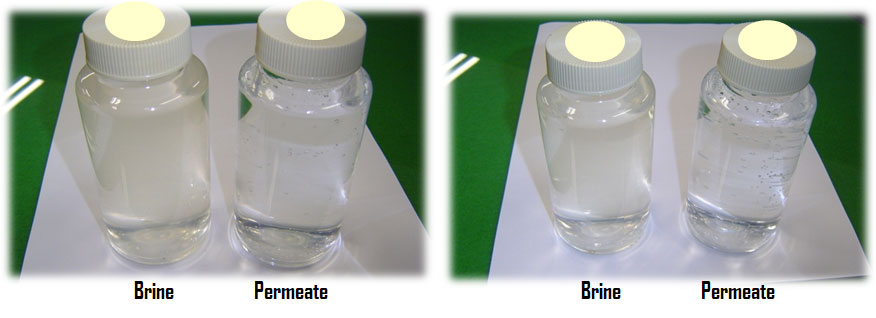 |
| Category | A coporation | B coporation | Drinking water Standards |
||
| Before treatment | After treatment | Before treatment | After treatment | ||
| Salt (%) | 9.1 | 8.5 | 8.4 | 7.8 | - |
| pH | 5.06 | 5.65 | 4.74 | 5.37 | 5.8 ~ 8.5 |
| Turbidity (NTU) | 21.400 | 0.226 | 28.300 | 0.254 | 0.5 |
| Chromaticity (PCU) | 16 | 0 | 16 | 0 | 5 under |
System effectiveness
| 01 | Optimization system with automatic operation | Easy to maintenance |
| 02 | Application to Kimchi manufacture | Desalination and serparation of contaminants |
| 03 | Need process except chemicals | Membrane meets the conditions |
| 04 | Reducing salt uses in pickling process price competitiveness up | Increase exports |
| 05 | 1/10 Salt water generation | Reducing wastewater treatment costs and sites |
| 06 | Reduction of using ground water | Cost savings |
Nano desalination system reusing process
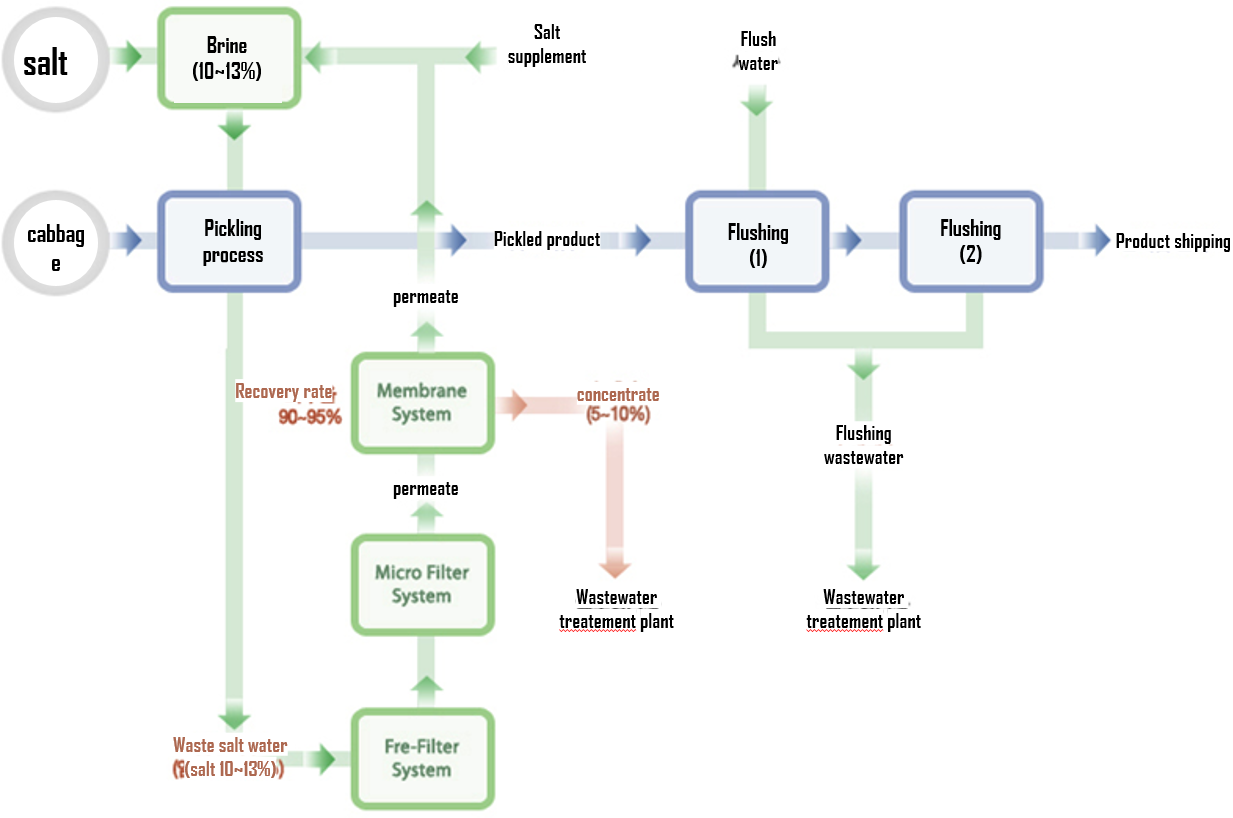
Nano desalination system characteristics
- Automatic operation by PLC programs (Membrane treatment and CIP process)
- Pre-treatment process that protects the membrane made compactly (easy to maintenance and operation)
- Using automatic valve in major pipeline for automatic operation
- Major equipments usually pumps are twin installed for standby an emergency
- Installing major measure instrument on panel cover makes quick grasp
- Having major engineer technology as IPRs
- System consist of STS304/STS316 materials with no corrosion by long-term operation
- Perfect separation of chromacity, odor, debris from salt water
- Safe hygiene due to non-treatment chemicals in process
- Automating the entire process makes easy to maintenance/operation
- Simple process configuration with small size of site
- Reduction salt usage over 90%
Maintenance costs
| No. | Category | Contents | Anniversary costs |
| 1 | Expendables (Filter) |
- 1st pre-treatment Filter - Membrane pre-treatment Filter |
$4,140/year |
| 2 | Membrane |
- Replacement period : 1 year - Quantity per replacement : 6 |
$4,060/year |
| 3 | Electricity |
- Pumps TOTAL : 20kwh - operation/day : 10 hours - uses/day = 200kw |
$3,000/year |
| Anniversary costs for maintenance | Maintenance costs = $11,200/year (Treatment costs = $1/ton) |
||
Comparisons with other processes
| Category | Electrooxidation | Activated carbon absorption | Membrane separation(Ours) |
| Principles | - Chemical oxidation with electricity | - Activated carbon absorption | - Physical separation using membranes |
| Applications |
- Non-gradable wastewater - Textile, livestock, etc. |
- Uses as advanced treatment process for removal COD, chromacity, odor - Pre-treatment of membrane process |
- Treatment with non-chemical process such as drinking water, food related products - Food, desalination, concentration, seawater, ground water |
| Process |
- Pre-treatment → Electrooxidation → Filtering or MMF - Pre-treatment → Electrooxidation → Activated carbon absorption |
- Pre-treatment → Activated carbon absorption - Pre-treatment → UF → Activated carbon absorption |
- Pre-treatment → Membrane - Microfilter → Membrane |
| Pros |
- Can applicated to non-gradable wastewater - Reducing process time by fast reaction time |
- Excellent removal efficiency for chromacity and odor - Simple configuration and low costs with easy operation |
- Wide application about drinking water related - Perfect separation of chromacity, odor, organic of waste salt water - No latter treatment with no debirs - Safe hygiene by non-chemical usage - Automatic process with easy operation - Simple process with small size of site - Reduction salt usage over 90% |
| Cons |
- Bromic acid can causing carcinogenic agent ? Generate by-product(need to filtering) - Generates H2, O2 gas can causing explosion - Longer electrolysis lower concentrate of Cl(decrease salt concentrate) - Not suitable for food process for safety reasons - Decreasing salt concentrate of permeate more than 1% - Lower reduction of salt usage than membrane separation process |
- Odor from decomposition of absorbate - Need pre-treatment process - Pre-treatment costs a lot - Shorten life-span of activated carbon when pre-treatment is not appropriate makes excessive replacement costs - Long-term operation leads to water quality fluctuations makes difficult to maintenance |
- Concentrate generation (10% of raw water) - Initial investment costs - Decreasing salt concentrate of permeate more than 1% |
Field-applied systems
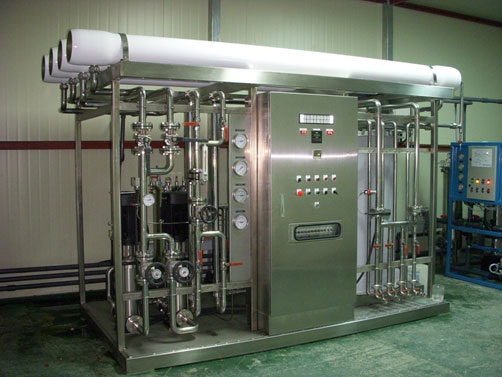
P corporation(30ton/day)
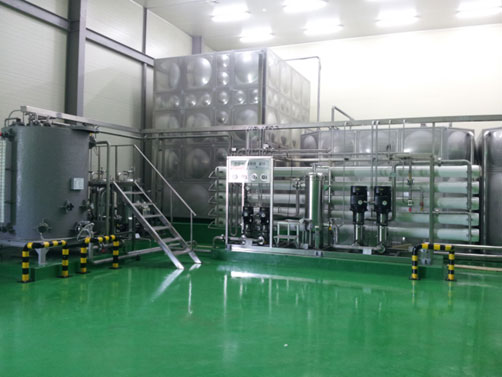
H corporation (80ton/day)